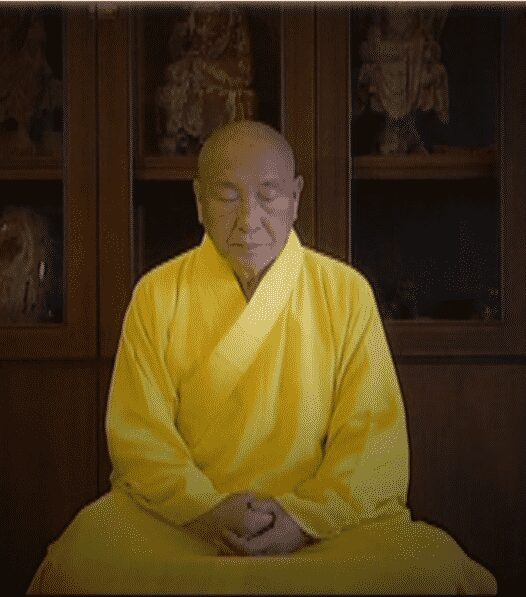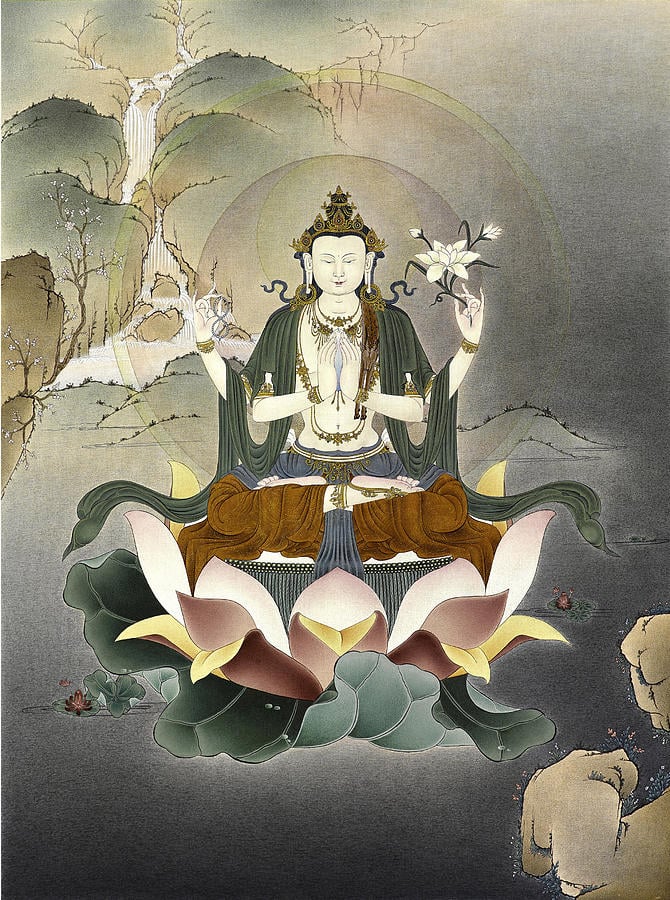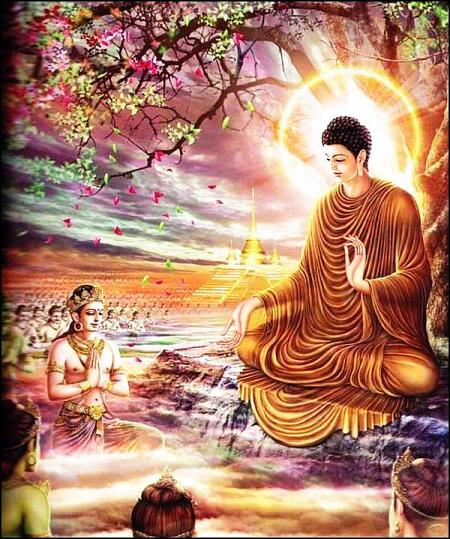Dharma (Sanskrit) or dhamma (Pali) is a word buddhists use very often. It is the second gem of the Three Jewels – Buddha, Dharma, Sangha. The word often is defined as “the teachings of the Buddha,” but dharma means something more than that.
Dharma is a multifaceted word. We find it in capitals and lower case, singular and plural. For instance, we find it in: Dharma-kaya as cosmic Body of Buddha; Dharma as Buddha Mind; dharmas as physiological processes or events; Dharma as Buddhist Law; dharma as a sentient being’s duty to obey Buddhist law; and dharma as “nature” or natural characteristic of any non-intelligent species.
The word dharma comes from the ancient religions of India and is found in Hindu and Jain teachings as well as Buddhist. Its original meaning is “natural law.”
Its root word, dham, means “to uphold” or “to support.” In this broad sense, common to many religious traditions, dharma is that which upholds the natural order of the universe. This meaning is part of the Buddhist understanding.
Dharma is a Sanskrit word that has multiple meanings. It can refer to universal law, righteousness, social duties, good qualities, or subtle phenomena that are the constituent elements of all existence. These meanings are separable in theory, but are conceptually interconnected: the Buddha’s teachings express the true nature of reality; lead to development of good qualities; and accurately represent the constituent elements of the universe, how they operate, and how they affect the religious life.
In Buddhist literature, dharma often refers to Buddhist teaching and practice in general. In this sense, dharma is used by Buddhists to encompass everything that was taught by the Buddha (or more precisely what a given tradition believes was spoken by him). For Buddhists, Buddhadharma accords with and describes universal truth and details a path to salvation through which one overcomes suffering (duḥkha) and escapes from cyclic existence (samsara).
Every tradition of Buddhism has its own perspective on what constitutes the dharma, and there is considerable disagreement among Buddhists regarding what is the Buddha’s definitive thought (nītārtha) and what are merely provisional teachings of interpretable meaning (neyārtha) given in response to circumstances or for beings of inferior capacities. To further complicate the situation, as Buddhism spread beyond India to the far reaches of Asia, each region developed its own doctrines and practices, while also retaining some from the tradition’s Indian origins.
It is not consistent with Buddhism’s dharma to be attached to Buddhism. The dharma, which teaches equanimity, non-attachment, tolerance, patience, compassion, loving kindness and emptiness would also be teaching bigotry if it were to exclude other enlightened and wise teachings. The basic dharma of Buddhism is “oneness.” Oneness includes, rather than excludes.
Dhamma – the Teaching of Buddha
The Buddha’s sermons and teachings pointed toward the true nature of the universe, what is known within Buddhism as the Dharma. He gave his first sermon on the outskirts of the city of Varanasi at a deer park called Sarnath. This first sermon presents an overview of suffering and the way out of suffering. It is called the “Four Noble Truths.”
Dhamma in Theravada Buddhism
Dhamma is considered to be the nature of what-is; the truth of what the Buddha taught. In Theravada Buddhism, it is sometimes used to indicate all the factors of existence. This dhamma has three levels of meaning: the words of the Buddha, the practice of his teaching, and the attainment of enlightenment. So, dhamma is not just doctrines; it is teaching plus practice plus enlightenment.
Dhamma takes in the phenomenal world as it is; the laws of nature; the duties to be performed in accordance with the laws of nature; and the results of fulfilling such duties. This aligns with the way dharma/dhamma was understood in the Vedas.
Buddhadasa also taught that dhamma has six attributes. First, it was taught comprehensively by the Buddha. Second, all of us can realize dhamma through our own efforts. Third, it is timeless and present in every immediate moment. Fourth, it is open to verification and does not have to be accepted on faith. Fifth, it allows us to enter Nirvana. And sixth, it is known only through personal, intuitive insight.
Dharma in Mahayana Buddhism
Mahayana Buddhism generally uses the word dharma to refer to both the teachings of the Buddha and the realization of enlightenment. In the Zen tradition, for example, to present or expound upon the dharma usually refers to presenting some aspect of the true nature of reality.
Early Mahayana scholars developed the metaphor of “three turnings of the dharma wheel” to refer to three revelations of teachings.
According to this metaphor, the first turning occurred when the historical Buddha delivered his first sermon on the Four Noble Truths. The second turning refers to the perfection of wisdom teaching, or sunyata, which emerged early in the first millennium. The third turning was the development of the doctrine that Buddha nature is the fundamental unity of existence, pervading everywhere.
Mahayana texts sometimes use the word dharma to mean something like “manifestation of reality.” A literal translation of the Heart Sutra contains the line “Oh, Sariputra, all dharmas [are] emptiness” (iha sariputra sarva dharma sunyata). Very basically, this is saying that all phenomena (dharmas) are empty (sunyata) of self-essence.
The Dharma Body
Both Theravada and Mahayana Buddhists speak of the “dharma body” (dhammakaya or dharmakaya). This is also called the “truth body.”
In Theravada Buddhism a Buddha, an enlightgened being, is understood to be the living embodiment of Dharma. However, this does not mean that a buddha’s physical body (rupakaya) is the same thing as dharma. It is to say that the Dharma becomes visible or tangible in a Buddha. In Mahayana Buddhism, the dharmakaya is one of the three bodies (trikaya) of a buddha. The dharmakaya is the unity of all things and beings, unmanifested, beyond existence and non-existence.
Buddha explained:
“This Dhamma that I have attained is profound, hard to see and hard to understand, peaceful and sublime, unattainable by mere reasoning, subtle, to be experienced by the wise.”
photo credit: AllPosters




